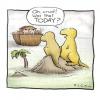Nation's poor at 49.7M, higher than official rate
-
Recently Browsing 0 members
- No registered users viewing this page.
-
Content similar to this discussion
-
- 1 reply
- 833 views
-
Netherlands to Sell $8.7 Billion ING U.S. Mortgage Bonds
By Jordan,
- financial
- mortgage bonds
- (and 1 more)
- 1 reply
- 1,145 views
-
About JWTalk.net - Jehovah's Witnesses Online Community
Since 2006, JWTalk has proved to be a well-moderated online community for real Jehovah's Witnesses on the web. However, our community is not an official website of Jehovah's Witnesses. It is not endorsed, sponsored, or maintained by any legal entity used by Jehovah's Witnesses. We are a pro-JW community maintained by brothers and sisters around the world. We expect all community members to be active publishers in their congregations, therefore, please do not apply for membership if you are not currently one of Jehovah's Witnesses.


Recommended Posts